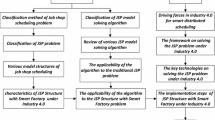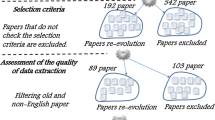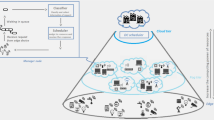Abstract
Accurate estimation of workflow Quality of Service (QoS) enhances the efficiency of scheduling algorithms. The availability and performance variations of Grid computing resources have made this estimation a great challenge. Most workflow QoS estimation algorithms are based on static performance of resources. In this paper, based on resources availability prediction, we propose an algorithm called WQE for estimating the QoS of a Grid workflow. WQE consists of two phases: resource monitoring and analysis and workflow QoS computation. In the first phase, two prediction algorithms are proposed to stochastically predict the availability state of resources. In the second phase, the QoS of each activity is estimated based on the host availability prediction result. The QoS of basic structures is computed by aggregating the QoS of their operands. Using a tree structure corresponding to the workflow, the QoS of basic structures is used to compute the total QoS of the workflow. The simulation results on Notre Dame University trace showed that the proposed method has higher estimation accuracy in comparison with HEFT.
























Similar content being viewed by others
Notes
The order of activities executions is also required when some parallel activities map to the same resource.
Generally, the CPU threshold value can be defined by resource owners. The Condor uses 30 % as CPU threshold for an available state [6].
In the case that |SI|=1, all observations refer to one availability state. In the case that |SI|=L, each observation refers to a different availability state in comparison with its previous and next observation.
There is no difference between complexity of PW and PE. PW scans subintervals twice while PE scans once.
As the number of availability levels is bounded, it can be ignored in complexity computation.
Since we are assuming approximately the same amount of tasks, the workflow gets closer to the shape of a sequence structure.
References
EGEE homepage (2008). http://egee.cesnet.cz/en/info/
Teragrid homepage. http://www.teragrid.org
PlanetLab (2008) P.L.A. open platform for developing debugging and accessing planetary scale services. http://www.planet-lab.org
Frey J, Tannenbaum T, Livny M, Foster I, Tuecke S (2001) Condor-g: a computation management agent for multi-institutional grids. In: International conference on high performance distributed computing, pp 55–63
Litzkow M, Livny M, Mutka M (1988) Condor—a hunter of idle workstations. In: International conference on distributed computing systems, pp 104–111
Rood B, Lewis MJ (2009) Grid resource availability prediction-based scheduling and task replication. J Grid Comput 7:479–500
Kiran M, Hashim A-HA, Kuan LM, Jiun YY (2009) Execution time prediction of imperative paradigm tasks for grid scheduling optimization. Int J Comput Sci Netw Secur 9:155–163
Smith W (2007) Prediction services for distributed computing. In: International symposium on parallel and distributed processing, pp 1–10
Tao M, Dong S, Zhang L (2010) A multi-strategy collaborative prediction model for the runtime of online tasks in computing cluster/grid. Clust Comput 14:199–210
Glasner C, Volkert J (2011) Adaps—a three-phase adaptive prediction system for the runtime of jobs based on user behaviour. J Comput Syst Sci 77:244–261
Byun E, Choi S, Baik M, Gil J, Park C, Hwang C (2007) MJSA: Markov job scheduler based on availability in desktop grid computing environment. Future Gener Comput Syst 23:616–622
Ramakrishnan L, Reed D (2009) Predictable quality of service atop degradable distributed systems. Clust Comput. doi:10.1007/s10586-009-0078-y
Wang H-C, Lee C-S, Ho T-H (2007) Combining subjective and objective QoS factors for personalized web service selection. Expert Syst Appl 32:571–584
Hwang S-Y, Wang H, Tang J, Srivastava J (2007) A probabilistic approach to modeling and estimating the QoS of web-services-based workflows. Inf Sci 177:5484–5503
Jaeger MC, Rojec-Goldmann G, Muehl G (2004) QoS aggregation for web service composition using workflow patterns. In: International conference on enterprise distributed object computing, pp 149–159
Zheng H, Yang J, Zhao W (2010) QoS probability distribution estimation for web services and service compositions. In: International conference on service-oriented computing and applications, pp 1–8
Maheswaran M, Ali S, Siegel HJ, Hensgen D, Freund RF (1999) Dynamic mapping of a class of independent tasks onto heterogeneous computing systems. J Parallel Distrib Comput 59:107–131
Topcuoglu H, Hariri S, Wu MY (2002) Performance-effective and low-complexity task scheduling for heterogeneous computing. IEEE Trans Parallel Distrib Syst 13:260–274
Cao H, Jin H, Wu X, Wu S, Shi X (2010) DAGMap: efficient and dependable scheduling of DAG workflow job in grid. J Supercomput 51:201–223
Chen WN, Zhang J (2009) An ant colony optimization approach to a grid workflow scheduling problem with various QoS requirements. IEEE Trans Syst Man Cybern 39:29–43
Wolski R, Spring N, Hayes J (1999) The network weather service: a distributed resource performance forecasting service for metacomputing. Future Gener Comput Syst 15:757–768
Dinda P, O’Hallaron D (1999) An extensive toolkit for resource prediction in distributed systems. Technical report CMU-CS-99-138, Carnegie Mellon University
Hu L, Che X-L, Zheng S-Q (2012) Online system for grid resource monitoring and machine learning-based prediction. IEEE Trans Parallel Distrib Syst 23:134–145
Jiong Y, Guo-Zhong T, Ling C (2008) Allocating resource in grid workflow based on state prediction. In: IEEE/IFIP international conference on embedded and ubiquitous computing, pp 417–422
Lili S, Shoubao Y (2009) A Markov chain based resource prediction in computational grid. In: International conference on frontier of computer science and technology, pp 119–124
Ren X, Lee S, Eigenmann R, Bagchi S (2007) Prediction of resource availability in fine-grained cycle sharing systems empirical evaluation. J Grid Comput 5:173–195
Wu AS, Yu H, Jin S, Lin K-C, Schiavone G (2004) An incremental genetic algorithm approach to multiprocessor scheduling. IEEE Trans Parallel Distrib Syst 15:824–834
Tao F, Zhao D, Hu Y, Zhou Z (2008) Resource service composition and its optimal-selection based on particle swarm optimization in manufacturing grid system. IEEE Trans Ind Inform 4:315–327
Young L, McGough S, Newhouse S, Darlington J (2003) Scheduling architecture and algorithms within the ICENI grid middleware. In: UK e-science all hands meeting, pp 5–12
Cardellini V, Casalicchio E, Grassi V, Iannucci S, Presti FL, Mirandola RR (2012) MOSES: a framework for QoS driven runtime adaptation of service-oriented systems. IEEE Trans Softw Eng 38:1138–1159
Ramakrishnan L, Plale B (2010) A multi-dimensional classification model for scientific workflow characteristics. In: International workshop on workflow approaches to new data-centric science
Pegasus Workflow Generator. http://confluence.pegasus.isi.edu/display/pegasus/WorkflowGenerator
Chong A, Sourin A, Levinski K (2006) Grid-based computer animation rendering. In: International conference on computer graphics and interactive techniques, pp 39–47
Acknowledgements
This work is being supported by Iran Telecommunication Research Center (ITRC), Tehran, Iran, Contract No. 12200/500.
Author information
Authors and Affiliations
Corresponding author
Rights and permissions
About this article
Cite this article
Kianpisheh, S., Moghadam Charkari, N. A grid workflow Quality-of-Service estimation based on resource availability prediction. J Supercomput 67, 496–527 (2014). https://doi.org/10.1007/s11227-013-1014-8
Published:
Issue Date:
DOI: https://doi.org/10.1007/s11227-013-1014-8




